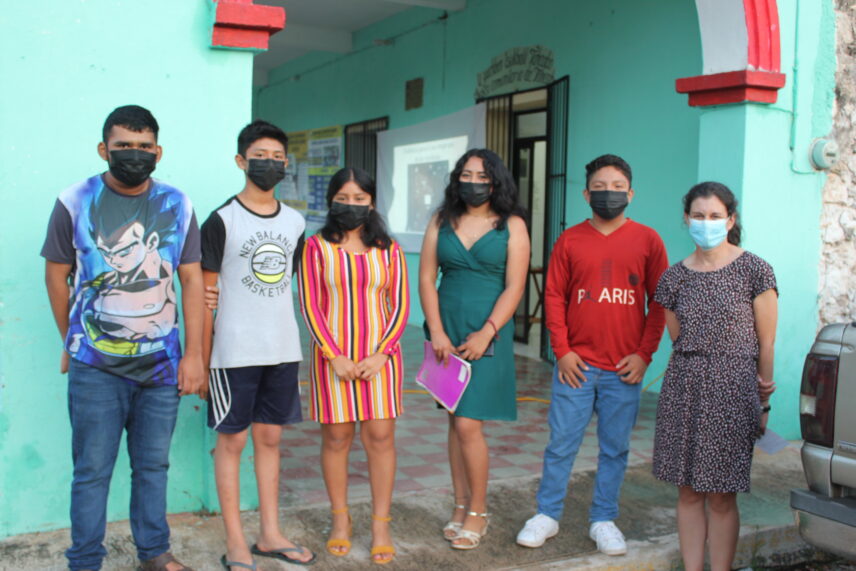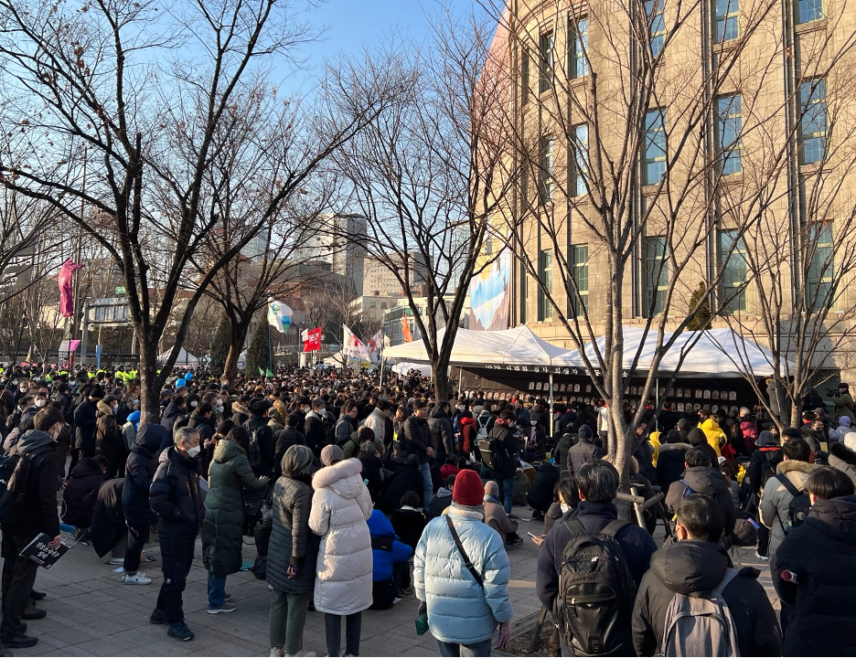
The dress code of archaeologists in the field plays an important role in facilitating engagement with collaborators. In 2022, I conducted ethnographic research as part of a collaborative archaeological project in Tahcabo, Yucatán, Mexico. I worked with local youth...
The dress code of archaeologists in the field plays an important role in facilitating engagement with collaborators. In 2022, I conducted ethnographic research as part of a collaborative archaeological project in Tahcabo, Yucatán, Mexico. I worked with local youth to collect oral histories while helping with archaeological fieldwork. Committed to feminist research and decolonizing academic fieldwork, I learned from working as both archaeologist and ethnographer that clothing choices are a fundamental part of the decolonizing process.
By recognizing the patriarchal and colonialist underpinnings of ethnographic fieldwork that requires long solo stints in the field, feminist and decolonial insights question the strict boundaries between field and home. In archaeology, feminist and decolonial critiques disrupt the model of the intrepid, lone (male) archaeologist carrying out fieldwork. Furthermore, decolonizing archaeology requires moving beyond investigations of the past that center only academic interests to a collaborative research model that centers the concerns of local and Indigenous communities. Community-engaged research promotes multidirectional knowledge exchange between archaeologists and collaborators and often includes methods such as museum displays and oral histories in place of, or in addition to, traditional archaeological excavation and survey.
Thus, trips to the field are not just an independent academic endeavor aimed at extracting data, but instead create space to form bonds and exchange information with the community. My goal is to demonstrate how seemingly small choices that archaeologists make about field clothing can play an important role in decolonizing archaeological fieldwork. Below, I share my story as I navigated the dress code for a collaborative archaeological field project.
The Field
As I packed for my 2022 field season in Yucatán, I carried with me categorical ideas about how I should dress. “Field” meant trudging through the jungle while a local man hacked a path for me with a machete, and it meant sitting on a woman’s front porch listening to her speak about the meaning of her local church. For the archaeological field, a wide-brim hat, long pants, and hiking boots are a must. “Field” dress is distinct from “home” dress for the archaeologist because the field requires clothing that protects oneself from the challenges of being outdoors for long hours while collecting data, often in an unfamiliar rugged environment.
The archaeologist’s field clothes are not simply practical; they also reflect popular media depictions of archaeological fieldwork and play a role in social distinction. In Latin America, archaeologists from the United States or Europe traditionally hire local workmen to assist with the manual components of the archaeological work. I have observed that local men do not usually wear the same protective attire as the foreign researchers. Though I selected some of my archaeological field clothes from my local thrift shop, items such as hiking boots can be costly, and cost, along with local knowledge and preferences, likely contributes to what local workmen wear.
Preparing my ethnographic field outfits felt a little more intimidating. I knew temperatures would be hot in Yucatán, so I wanted to be comfortable while I sat outside for hours chatting with folks. But as a woman traveling solo, I also worried about being respectable. I had learned from an online Yucatec Mayan language course that it was best to enter small Maya communities with a spouse. Thus, I assumed that small Yucatecan towns held conservative values. As a sign of respect, I chose to align my dress with that which would be appropriate for a local woman. At the thrift shop, I selected a few formless dresses and knee-length skirts to wear with tops that kept my shoulders covered. I packed my black Chaco sandals to serve as comfortable, sturdy walking shoes for any non-hiking-boot occasion.
Upon arrival to Yucatán, however, my ideas about how I should dress for my ethnographic and archaeological data-collection activities were quickly upended. On my daily visits to Tahcabo, my project partners from the Universidad de Oriente (UNO) in Valladolid, Yucatán, led the work schedule. I had imagined days set aside for oral history interviews and days set aside for archaeological fieldwork, but the actual schedule was quite haphazard. On some days, I would dress for the archaeological field and find myself heading to the ethnographic field for interviews in my field pants and boots. On other days, dressed prepared for interviews, I would end up hobbling out to the field in a skirt and my Chacos, keeping a close eye out for snakes.
In time, it became apparent to me that I was not dressed like the local women no matter what day I thought it was. Women wore tank tops, and many elderly women wore dresses, but younger ones wore shorts. On days we would swing by the Universidad de Oriente to pick up the undergraduate students, I would see many women on campus in skinny jeans. The connection between dresses with sleeves and conservative values was entirely my own fabrication. I began to feel clunky in my khakis and flowy skirts. Despite this, I held onto the idea that the field was a place where my positionality as a researcher was fixed and that I needed to follow traditional archaeological dress.

Dressing for Presentation with Community
The ethnographic component of my summer fieldwork included an oral history project with a group of six youth from Tahcabo’s secondary school to learn about the history of the town’s church. The goals of collecting oral histories with youth were to facilitate cross-generational connections and to identify themes of interest within the community for additional archaeological exploration. After five weeks of meeting with the students to teach them about oral history methods and have them conduct interviews with their elders, I encouraged the students to present what they learned about the church at a community forum that I organized with the other archaeologists.
When I arrived the evening of the forum at the Palacio, the town’s central meeting place, I was taken aback by how beautiful the two women students looked with their hair done, makeup on, and nice dresses. I could not help but feel drab in my formless dress, my hair pulled back in a ponytail. I had not departed from my oral history field attire for the presentation event. In Tahcabo, dressing for an evening event, especially when one is presenting, is distinct from daily dress. Though I had not envisioned the event as formal, for these students, the forum was a special moment worthy of putting additional effort into their appearance.
The second event that included an opportunity for collaborative presentation was the community museum’s anniversary. The event took place during the festival of the town’s patron saint, San Bartolomé. During the festival, rather than staying in the nearby city of Valladolid, as I had done previously, I slept in a hammock in our archaeological laboratory, along with the academic team. We all shared the same space, and one bathroom behind the building. Each evening, the UNO students took care to wash and put on freshly ironed shirts and skinny jeans. They needed to borrow an iron from next door, but they made it work. I kept wearing the same old knee-length skirts but did my best to take my turn in the shower.
On the night of the museum event, after a long day of getting the museum ready, we all came back to the lab, and one UNO student, Ana, asked if I wanted my turn in the shower. There were nine of us there that day, as several people had come in from Valladolid, and the archaeology lab was crowded. I was tired and declined the shower, saying I would just take a nap in the hammock. With just the one bathroom out back, it felt overwhelming. After my nap, I smoothed my hair and skirt the best I could and washed my hands in the sink. This seemed adequate for me to be presentable.
We were busy that night handing out tortas (pork sandwiches) and cups of Coca-Cola. I noticed that a young woman who acted as a main caretaker for the museum was wearing a burgundy evening gown. She looked incredible. I was thankful I was at least wearing a skirt but regretted slightly not putting on a nicer dress. The situation conveyed to me again the tension between how anthropologists might dress in the field versus at home. Typically, anthropologists give presentations at conferences, which are held away from the places where we work. Extra care is taken when selecting clothes for conferences, as the focus is looking professional. Collaborative practice, however, provides opportunity to present with partners in the field. In this case, with our partners in Tahcabo, we were honoring the founding of the community’s museum, which showcased local history, heritage, and archaeology. The event was as important as any conference. If in our collaborative efforts we present information together in the field, then we must prepare for such moments with the same care we put into any formal presentation.
The Procession
The following evening was the final event of the festival: the procession of the patron saint. When the procession began, Ana and I followed along as the saint was paraded through the streets. As we walked, Ana told me how the town in Yucatán she is from is like Tahcabo, yet there were little differences in how her town carried out their patron saint festival. I marveled at the different perspective she brought as an anthropologist who was local and yet still able to step back and see the bigger picture.
The next day, it was time for me to head back to the United States and for Ana to visit family in Merida. As we were packing our things, Ana suddenly asked me if I really had not taken a shower the other night before the museum event. I was slightly surprised, as the question seemed to come out of nowhere. I responded that I had not. The look on her face was one of disbelief and disdain. My embarrassment felt poignant. I really valued Ana’s opinion and remembered that she came from a town like Tahcabo and likely lived in a house with many people, one bathroom, and no hot water. It made me reflect. Why had I not taken a shower or put on a fancy dress that evening? It was not due to a cultural difference, because at home I would have. This realization pained me. I had skipped the shower and stayed in field clothes because I was in the field. But my field was my interlocutors’ home.
Decolonizing as a Path for Learning Lessons
Notions of how archaeologists should dress in the field are grounded in the belief that the purpose of fieldwork is solely to gather information. For archaeologists, clothing may appear to serve only a practical, protective intention, but, of course, the power and gender implications of dress should not be overlooked. Feminist anthropologists argue that clothing choices extend beyond practicality and serve to contest Western values of dress. My beliefs about distinct boundaries between field and home influenced how I dressed. If the boundaries between field and home are blurred, a dress code may serve to connect with communities. Decolonizing archaeology shifts the purpose of fieldwork and calls for multidirectional exchanges of knowledge. This involves listening and learning from those we work with. Personal preference, practical situations, and social and cultural circumstance will all contribute to how we dress in the field. Listening to our partners allows us to make those choices with attention and care.
The post Field Fashion appeared first on Anthropology News.









